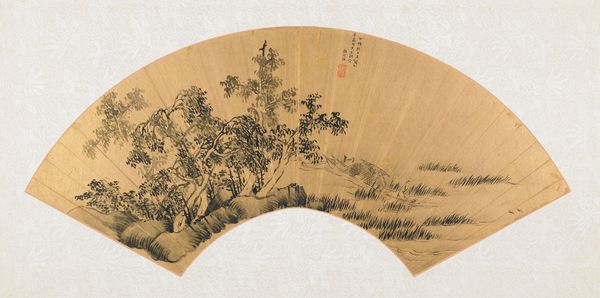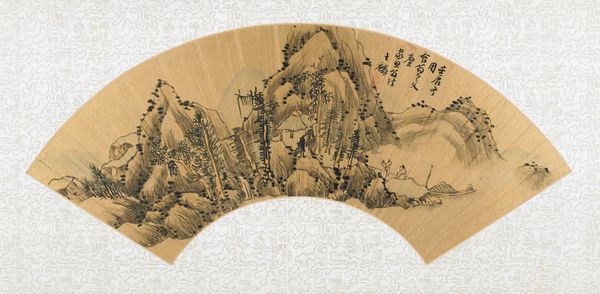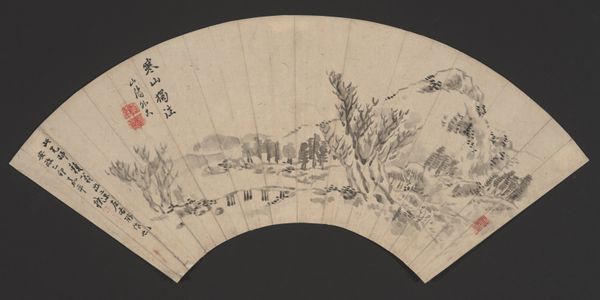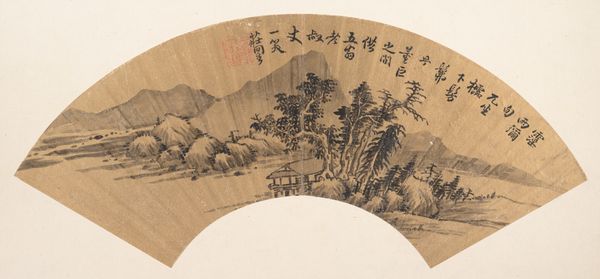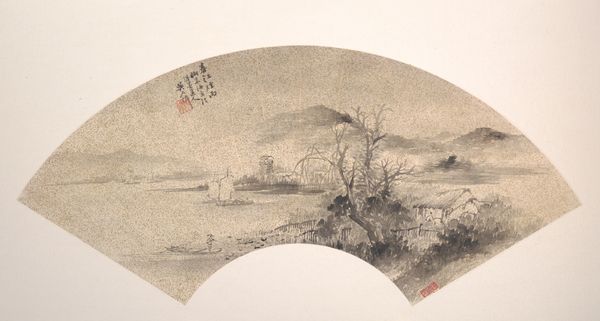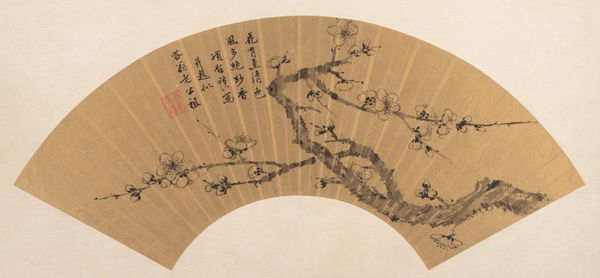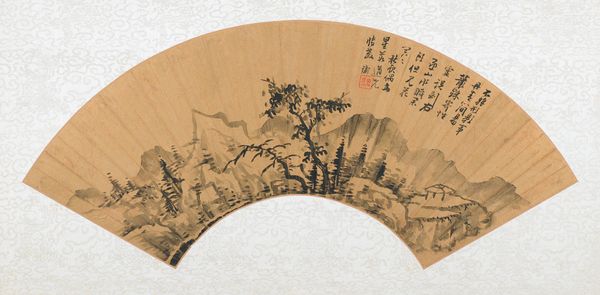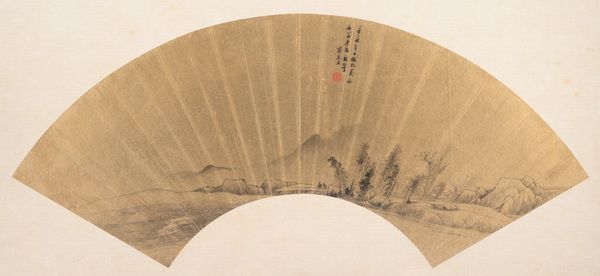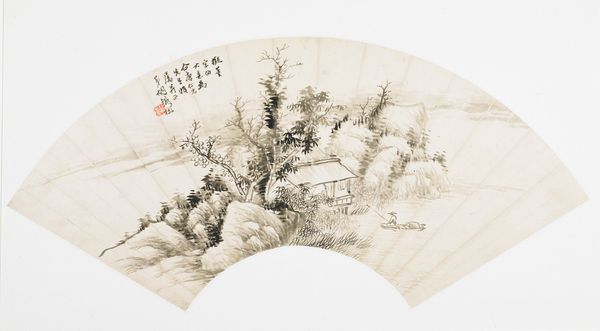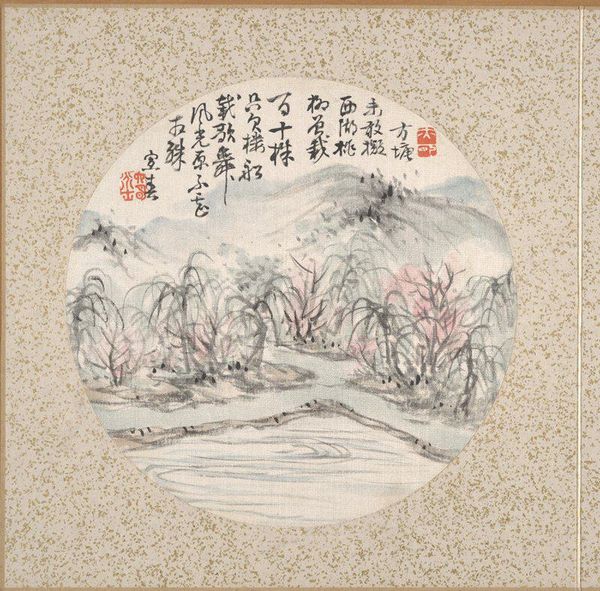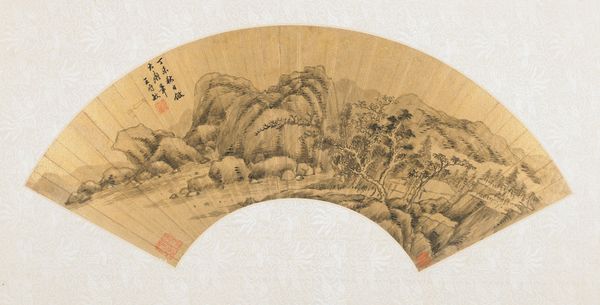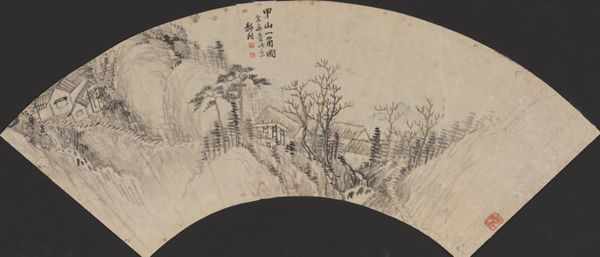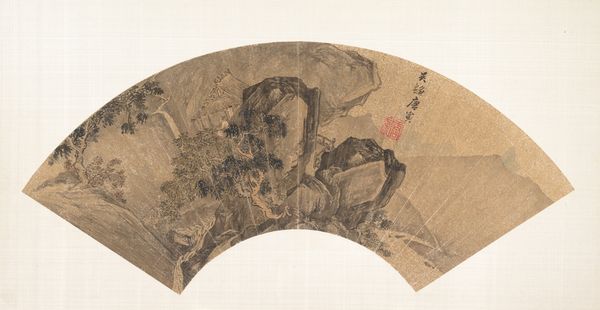
drawing, paper, ink
#
drawing
#
asian-art
#
landscape
#
paper
#
ink
#
orientalism
Dimensions: 9 1/2 x 21 5/16 in. (24.13 x 54.13 cm) (image, sheet)
Copyright: Public Domain
Curator: I'm immediately struck by the simplicity and vulnerability of the bare trees at the center. They seem almost to huddle together against the landscape. Editor: That's interesting. I see a connection with orientalist visions and this aesthetic that is built around a simple motif—Zhang Zongcang’s Landscape is rendered in ink on paper, probably from the 16th or 17th century. It now resides here at the Minneapolis Institute of Art. Curator: Yes, it certainly carries that air of idealized retreat, a harmony with nature that is very appealing. Editor: Absolutely, this idea of harmony hides power structures, creating both a yearning and an erasure. Landscapes like this became markers of elite taste and, consequently, tools for defining class and exclusion. We see that continued fetishization of nature tied to the global dominance exerted during the 16th and 17th centuries, where land becomes symbolic for the elite, almost an extraction of a visual territory. Curator: But even divorced from its original social context, doesn't the image retain a certain power? The delicate brushstrokes, the way the ink bleeds slightly into the paper, creating this hazy, dreamlike atmosphere… it all points to a deeper symbolic language. It invites contemplation and reverie. Editor: I think the "dreamlike" quality can be interpreted critically as well. Are we, as viewers, implicated in this romanticized vision that perhaps sanitizes complex realities and justifies the hierarchies of that period? To what extent the symbols depicted stand the course of power dominance is relevant. I always wonder whose dream we're actually experiencing. Curator: That's a valid point. And perhaps part of our role now is to unpack those layers of meaning, to recognize the cultural biases embedded within the image. Editor: Precisely, which also lets us understand our present in relation to those legacies. I think acknowledging that historical entanglement is crucial for a responsible and reflexive encounter with art of this era. Curator: So instead of simply admiring the serene beauty, we're compelled to ask: Whose serenity was this, and at what cost? Editor: Exactly. The image transforms from a passive object of admiration into a point of dialogue and critical inquiry. Curator: I see what you mean. This Landscape can challenge and reshape our perspective, reminding us of our contemporary struggles for cultural change. Editor: And for challenging these biased, pre-packaged orientalist symbols by embracing a pluralistic worldview!
Comments
No comments
Be the first to comment and join the conversation on the ultimate creative platform.
